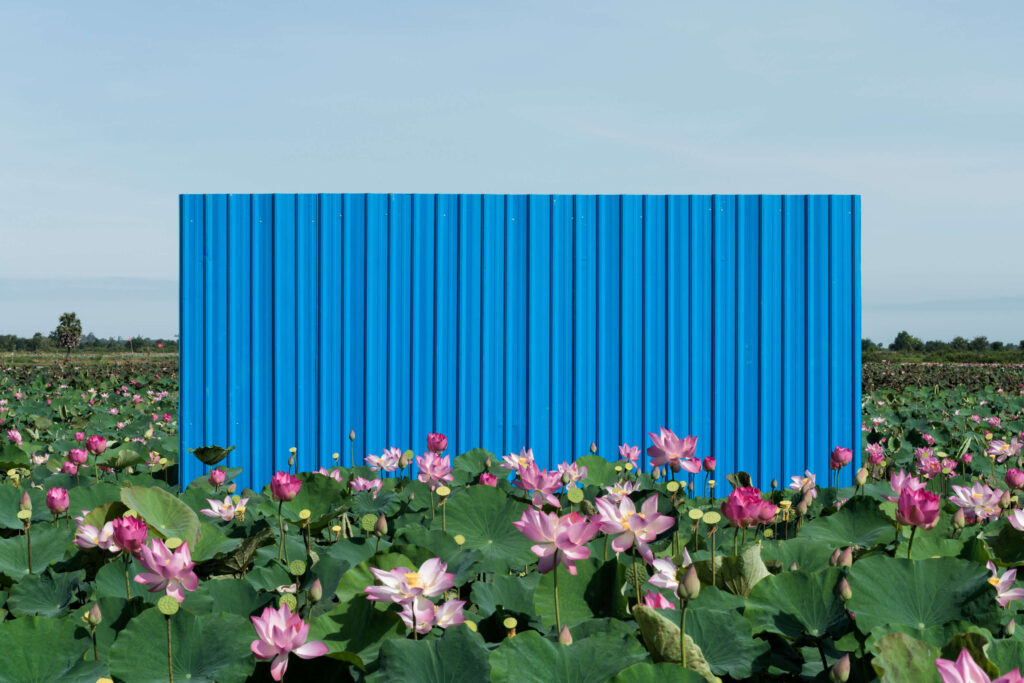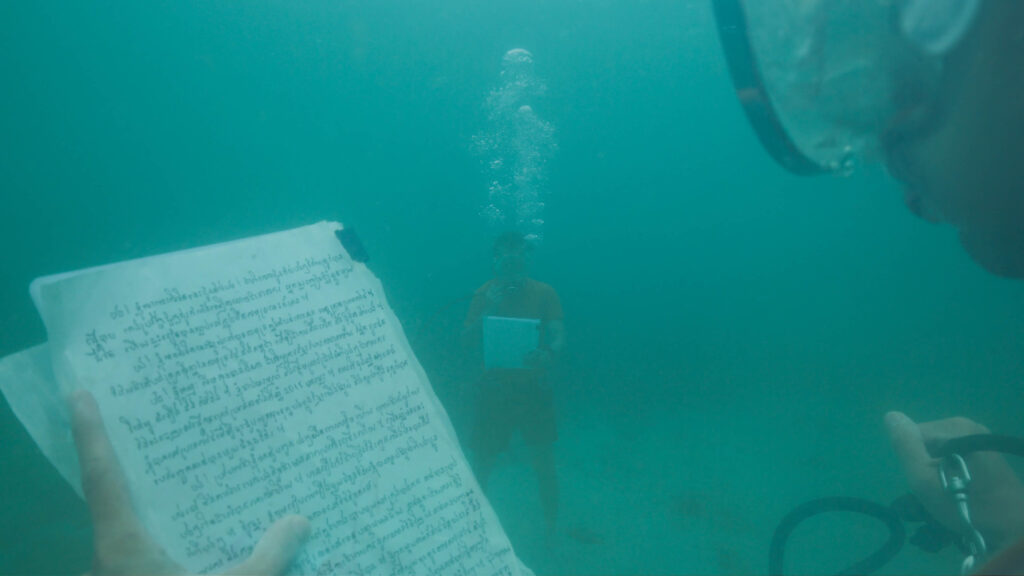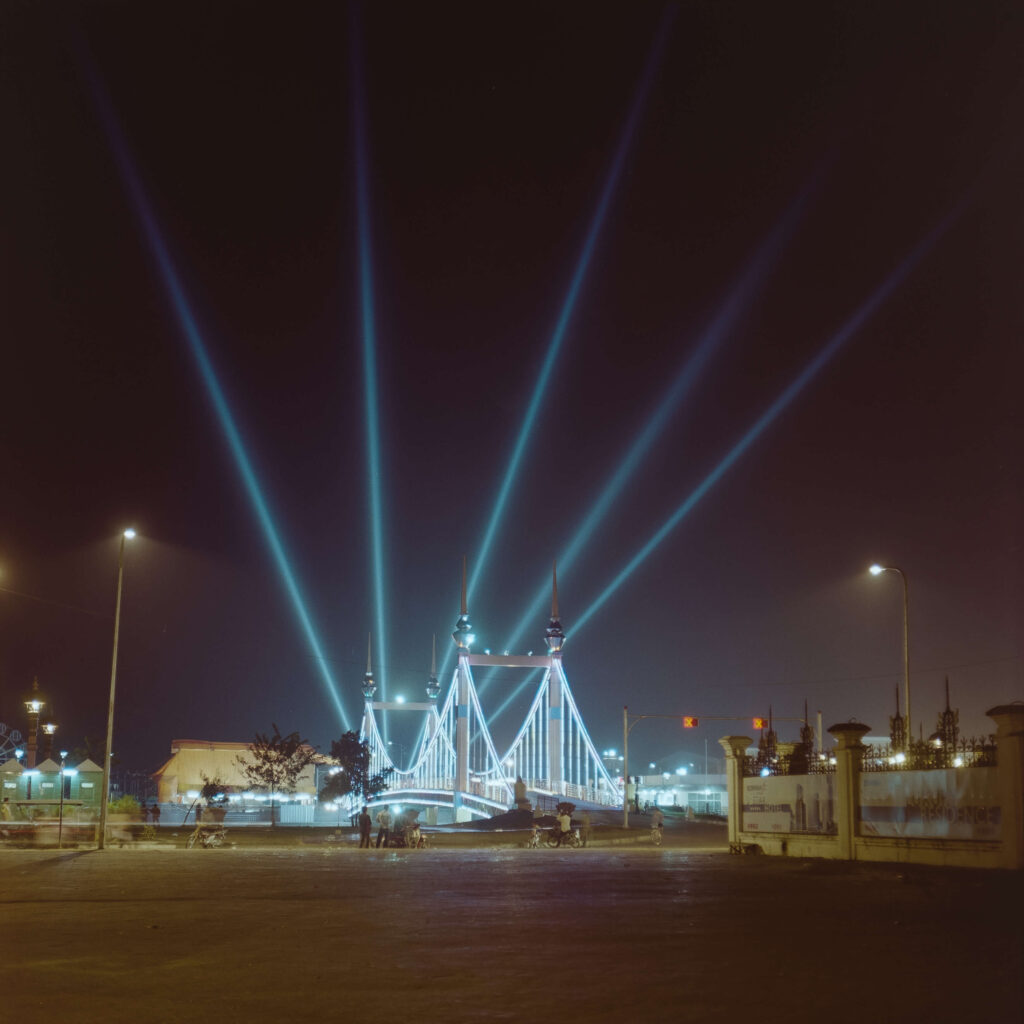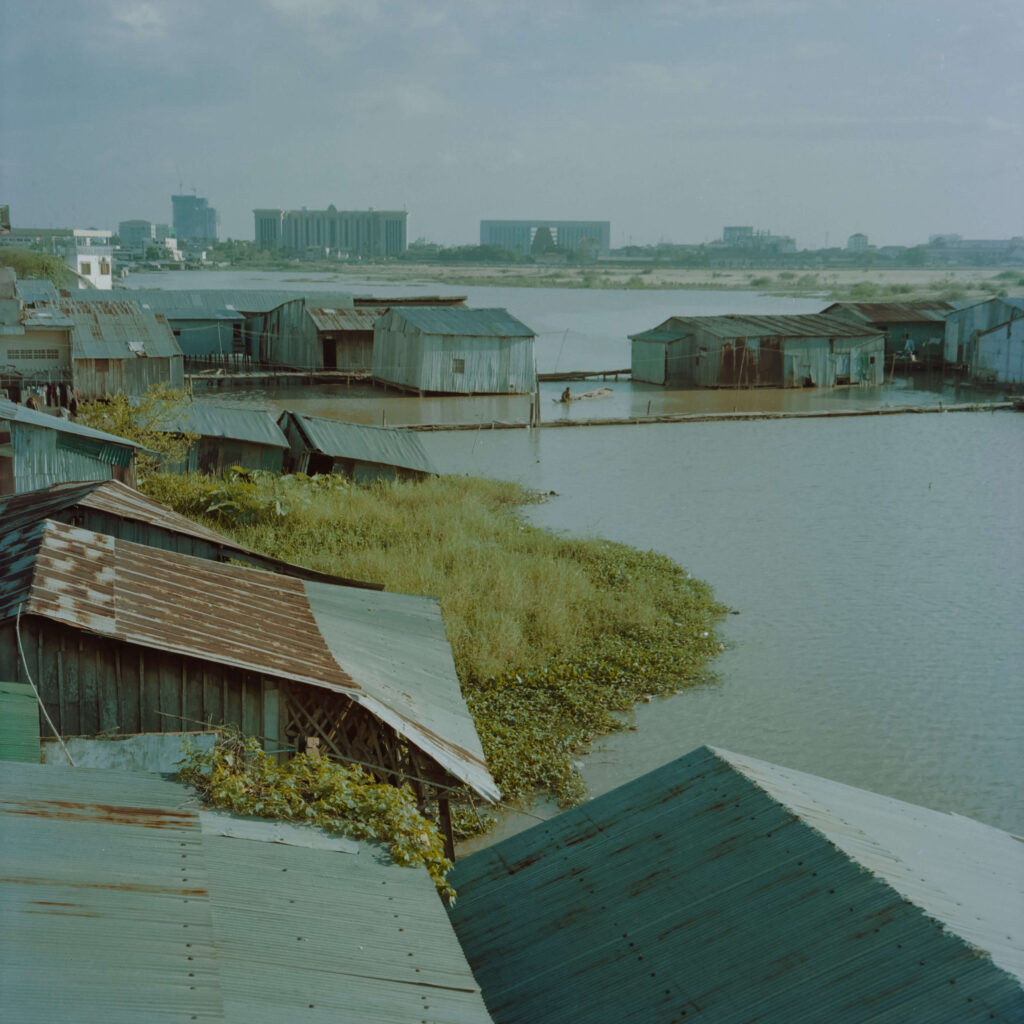
This article is part of the series of article “CULTURE” in collaboration with “Nyonyum Magazine”.
What do you imagine when you hear the word “Japanese culture” and “Khmer culture?” Culture is a value created and circulated by people in a region or society. Every day, each of us participates in the creation of a new culture through various forms and activities, by learning from our neighbors and sharing our knowledge and ideas with others. The Japan Foundation is operating a cross-cultural exchange program overseas and developing a new culture with Khmer Smile Magazine, which is introducing Cambodian people to Japan, to inform about Japanese and Cambodian culture from different angles as a part of the “International cultural exchange” activities.
Pursuing the borders in the world

by contemporary artist Lim Sokchanlina
Lim Sokchanlina is an artist who is active in a broad range of fields such as photography, video, site-specific installations, and performance. In 2017, his works were exhibited in the program called “SUNSHOWER: Contemporary Art from Southeast Asia from the 1980s to Now” co-organized by the Japan Foundation Asia Center and The National Art Center, Tokyo and Mori Art Museum in Japan. He was also invited to the “Singapore Biennale 2019”. We had an opportunity to meet this person who continues to actively create arts, and ask him about his passion for creation.
Q1: You were invited to the “Singapore Biennale 2019” after the “Sydney Biennale” in 2018. These invitations were good news for you and for the Cambodian art scene as well. Could you tell us about your works for the exhibitions?
I brought my video work “LETTER TO THE SEA” at the “Singapore Biennale 2019”. This work depicts the life of Cambodian workers who migrate to Thailand. They are struggling with exploitation, abuse, conflict with workers from other countries and drug use. Moreover, some Khmer workers lost their lives in the sea. In 2018, having received support from the Japan Foundation, I spent two and a half months conducting a field research on the living conditions of Cambodian fishermen. And I found that they cannot get ashore for years and they have to be engaged in harsh work. In order to deliver the voice of the voiceless, I read my message at the bottom of the sea. For this work, I got a license of scuba diving. I hoped their voices are delivered to many people with the bubbles going up and drifting on the sea. I also wanted to dedicate this work to the Khmer workers who lost their lives in the sea. Reading an article in the water was not easy, but this is meaningful to an artist like me.

Q2: What were the reactions by those who have seen your works?
I heard from a program organizer that there were admirations and surprises. I hope that my works give the opportunity for the audience to learn about the suffering of migrants. I want to be their voice. This work is supposed to be exhibited in Osaka City, Japan, from mid-July 2021. I hope that this will be the opportunity for the Japanese audience to understand the struggles of Cambodian fishermen while working at sea.
Q3: What was your motivation to create “LETTER TO THE SEA” ?
I am interested in microeconomy, economic activities by individuals and by families. I earned my bachelor’s degree in economics and development at a university. Now my works have the perspectives of economics and politics as well as other environmental issues. I am always thinking about how Cambodia can grow and develop. Even a migrant worker is responsible for a part of the economy. I am interested in what drives them to other countries to get a job. I want to express the thoughts of each worker through my works. I will exhibit this work from mid-June to September 2021 in Osaka City.
Q4: You say that you are exploring continuities in visual practices. What does it mean exactly?
I am pursuing the sustainability or feasibility of visual arts. And I am also pursuing contemporary art. The definition of contemporary is too ambiguous to understand. In short, it means a modern art or a present work. My question is what a modern art and present work mean. In the field of art, originally a painting is something painted and a sculpture is something sculpted. But now they are mixed. Thus, we have to think and find out new ways of creation. Artists themselves face uncertainty concerning the final products. The results turn out to be different from what we had expected. Contemporary has broad meanings. This is why I want to find out its true meaning.
I am thinking what I can produce besides photographing, videos, and performances. Regarding the phrase of “Exploring the continuity of individual practices”, I used to be asked why I came up with the idea of making a video of reading messages in the sea rather than shooting sunken ships and or human remains. My answer is that it is important to try a new thing I had never done before in order to find new things. “Exploring” means finding or trying something new.
Q5: Is “straight line” your style?
It is the style I used when I was engaged in the creation of “Wrapped Future II”. For this wrapped future II series, I used galvanized iron, in the form of fences, metal plates, and walls. These walls are straight lines either vertical or horizontal in the graphics. Actually, my background is photography. During shooting, what I am interested in is graphics of the landscape or images. Once I come out of the house, I see that everything consists of lines. When we draw a picture, we start with a line. Graphic is very important for me. The combination of small elements makes shapes. And this position of a person in the graphic is bad while that position is good. This is the art of photography.
I am also curious about what visible and invisible borders are. Galvanized iron sheet is a part of the answer. If there is a fence, we can see it but we cannot see anything inside it from outside. What’s inside the fence belongs to the owner while we can walk outside. The straight line of the fence functions as a divider. This fence sometimes is visible and sometimes is invisible. In fact, there is no visible border on earth but people dare not to cross because it is illegal. This is the straight line and that’s why I want to know about migrant workers. Why there are borders and why the world is divided, especially divided into private and public. I have not yet found the answer to these questions.

Wrapped Future II
Q6: I heard that as a part of “Wrapped Future II” you are creating works that block the view by the panel in Cambodia. This way of expression seems to be suitable in countries where rapid development takes place, while in the developed cities such as Tokyo, New York, there might be different ways of expression.
In “Wrapped Future II” I use a galvanized sheet as a symbol of the point of division. It depends on how the audiences see to what degree it divides things. I don’t clarify everything but I would like to give the opportunity for discussion. I would like them to get ideas from the galvanized iron. I am trying to express what is happening in the context of Cambodia, the country which is developing, experienced in civil war, and is making efforts to develop and strive toward success.
The galvanized iron sheet represents part of the scenery, which is sometimes visible and sometimes invisible. In New York and in Tokyo, we see galvanized iron sheets but they are used to protect from risks at the construction sites. The purposes are different from those in Cambodia.
Q7: What do you want to do in the future?
I want to conduct research on the situation of Cambodian migrant workers returning from Thailand. Sharing the results with the young people who want to go to Thailand, I would like them to know the real situation.
Q8: Are there many people who appreciate the art in Cambodia?
The art market in Cambodia is very limited. In fact, there are very few Cambodians who know contemporary art and purchase it. Those who purchase artworks are rich Cambodians or Cambodians who used to study or stay abroad and learnt the value of art. Now, there are organizations which support the contemporary artists in Cambodia. Our organization, SA SA Art Project also tries to teach how to appreciate the art. As a result, there are more and more people who purchase art now. Our activities contribute to the art market in Cambodia.
Q9: Could an artist earn enough income?
I believe that, as with other cases, in the field of art, we can earn enough to feed ourselves if we hold strong belief. But for the field of contemporary art, since few people know it, it might be more difficult in Cambodia. Some say that the artists face difficulties under the Covid-19 situation. But as far as I am concerned, I can still earn my living with art.
Q10: How has the Covid-19 situation influenced your life? How did you overcome it?
As a professional artist, it is important to keep moving on in whatever situation. Of course, it is difficult to meet people, but I can continue shooting landscapes and studying its change since my work requires only me and an assistant.
Q11: What is your next plan? You are expanding your activities towards South East Asia and Japan. Will you go to new areas and change the direction of arts?
Now, I am planning to compile my works of the last few years as “Phnom Penh 2043”.
And in the future, I would like to exhibit my works in Europe and US because I want people to recognize my work and Cambodia. I would like them to know how Cambodia is changing and what its relation with the international community is.
Q12: Do you have favorite Japanese artists, film or novel?
So far, I had the chanc to share experiences with Japanese artists and to get to know them. My most favorite artist is SUGIMOTO Hiroshi. He is the artist who photographs “time”. I learned a lot from his artworks.
Of the filmmakers, I like KUROSAWA Akira the most among Japanese film directors. He represents the film director between 1960s and 1980s, and one of the most influential filmmakers in the world. He turns imagination into real images, or he transforms the abstract into the concrete. I got lots of inspiration from them and use them for my production.

The rainbow bridge at Koh Pich was reopened after a stampede incident in 2010, but was later demolished in 2011.

View of Boeung Kak Lake before being filled in 2011
Q13: What should we do to promote the art exchange program between Cambodia and Japan?
For art exchange between Japan and Cambodia, we should more actively build a relationship. In that context, I thank Japan Foundation for offering support for artists in Asia. I had such a great opportunity to travel to Japan. That was a great time for me to develop myself and my artwork. However, the opportunity for exchange of artwork production is still limited. I hope there will be more exchanges. Inviting Japanese artists to Cambodia is a good idea. I want to ask for support not only for the visual arts exchange program but also in performance. The program with its workshops for exchange will reinforce the friendship between Cambodia and Japan and the promotion of art.
